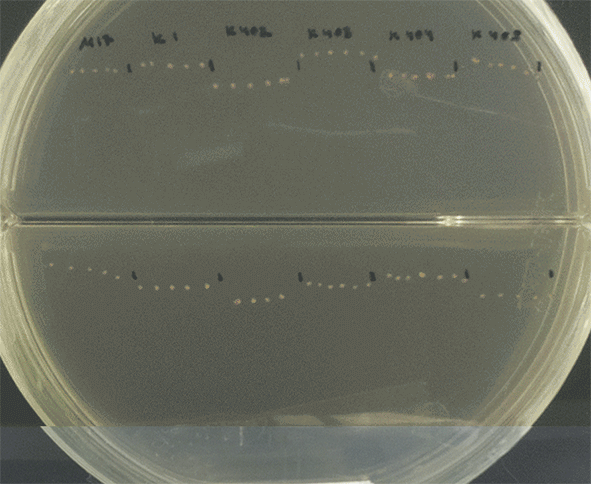Small foot-print imaging system for Petri dishes
Master's degree/engineering course project
(The earliest starting date June 1st 2018. For more info contact Alyona)
The research in our group is focused on molecular mechanisms underpinning development of plants. It is similar to engineering when there is nobody around to explain you what all the parts are for. So, on daily basis, we break plant genes to see what they were needed for. To track plant growth properly we need a goodcamera system that will image plants for days or even weeks (exactly like Fig 1, but less blurry). We grow our plants in small Petri dishes within a growth cabinet and thus need the imaging platform to have small foot print.

Fig. 1. Six days of time-lapse tracking of the root rowth. Arabidopsis thaliana seedlings grown on a Petri dish in a plant growth chamber.
Preliminary results
We put together the minimal version of the imaging stage (Fig. 2). Despite the questionable quality of the design, it was such a significant improvement of our experiments that we decided to invest into constructing a proper system. Our system is built around a Raspberry Pi computer, connected to a camera capable of producing images both under daylight conditions and at night using near-infrared illumination.


Fig. 2. The current layout of the imaging stage. The imaging takes place within the plant growth cabinet, which maintains optimal temperature and light intensity for the plants. Plants within a Petri dish are mounted on a Sugru holder and imaged by the IR camera taped to the piece of cardboard. The camera is plugged into a raspberry pi computer that saves images on a server connected via WiFi.
Project goals and aims
1. Make the imaging stage less prone to falling apart. Additionally, the stage should be constructed in such a way that it provides more consistent images with regards to lighting.
2. Develop a small footprint robot that can move plates from the growth position to the imaging stage and back. This will enable parallel imaging of multiple plates, while not compromising the amount of light available to the plants.
3. The robot needs to be able to communicate with the Raspberry Pi, either via ethernet, WiFi, bluetooth or serial/GPIO (or you may have other suggestions).

Our group has just installed a Prusa i3 MK3 3D printer!

Our first prototype for time-lapse imaging of 4 plates.
Fig. 3. Update (August 2018). No more double-sided tape on cardboard! We are switching to 3D printing.
Why should you join us
1. You will work in a fantastic team (see Fig. 4). We love what we do, and call it "work" just because we get paid for it.
2. You will co-author an open access publication describing the hardware and software of the system, helping other scientists to build on what we develop. All blueprints and software packages will be made available on-line under a permissible open source license.
3. We will introduce you to engineering on the DNA level.

Fig 4. The team.

